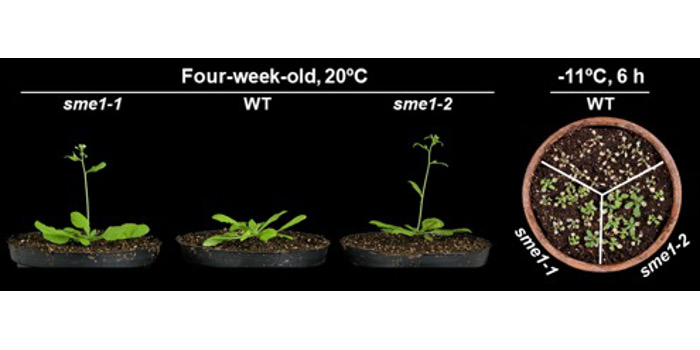
SME1 shapes plant development and freezing tolerance
Research, The Plant Cell, The Plant Cell: In a NutshellHuertas et al. show that SME1 modulates spliceosome activity to shape plant development and tolerance to freezing temperatures. Plant Cell https://doi.org/10.1105/tpc.18.00689
By Raúl Huertas, Noble Research Institute, Admore, Oklahoma, USA. Rafael Catalá, Centro de Investigaciones Biológicas-CSIC,…
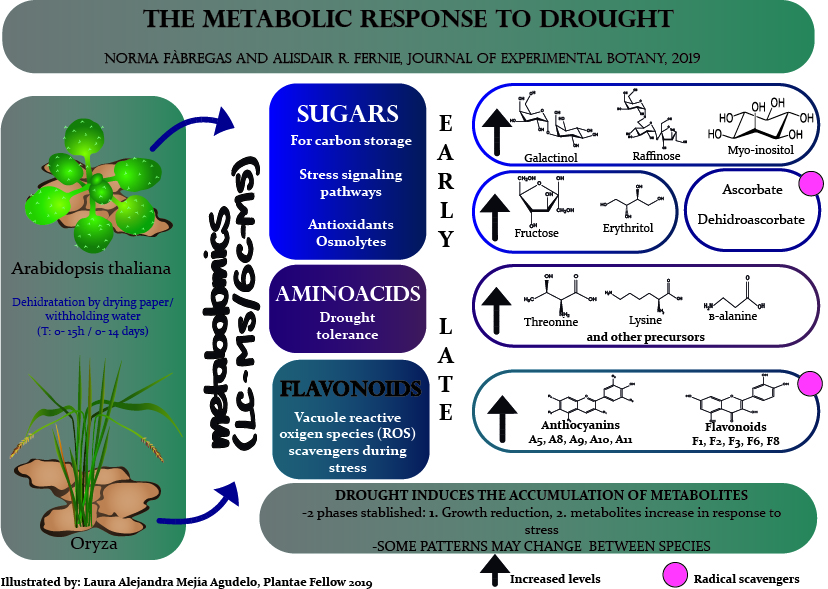
Review: The metabolic response to drought (J Exp Bot) ($)
Plant Science Research WeeklyUnderstanding environmental stress in plants is undoubtedly important due to the consequences of climate change in crop productivity and survival of plants. Metabolomics based on liquid chromatography and gas chromatography coupled to mass spectrometry (LC-MS, GC-MS) allows an understanding of the metabolic…

Root xylem formation and vascular acclimation to water deficit involves endodermal ABA signaling via miR166 ($) (Development)
Plant Science Research WeeklyAbiotic stress influences plant development, with the phytohormone ABA playing an important role. Ramachandran et al. have demonstrated ABA mediated activation of microRNA 166, which regulates expression levels of the HD-ZIP III transcriptional factor family. Exogenously supplied ABA alters xylem patterning…

PILS6 is a temperature-sensitive regulator of nuclear auxin input and organ growth (PNAS)
Plant Science Research WeeklyAuxin, a plant hormone and major growth regulator, is fundamental for adaptations to climatic variation in shoots but its role in roots under elevated temperatures is more controversial. PIN-LIKES (PILS) 2, 3 and 5 proteins have previously been identified to restrict nuclear auxin signalling but the…
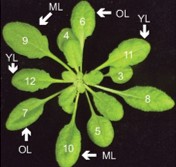
Leaf age dictates abiotic versus biotic stress signalling in Arabidopsis (PNAS)
Plant Science Research WeeklyPlants sense and respond to various external stimuli throughout their lifespan. During stress responses brought forth by abiotic or biotic factors, molecular and physiological adjustments mediated by distinct yet interconnected hormone pathways play critical roles in plant survival. Berens et al. investigate…

Auxin efflux carrier ZmPGP1 mediates root growth inhibition under aluminum stress (Plant Physiology)
Plant Science Research WeeklyAcid soils (pH < 5.5) mobilize aluminum (Al) in the rhizosphere, which damages the root meristem and hinders exploration for nutrients and water. Zhang et al. demonstrate that a mutation in ZmPGP1, an auxin transport protein, imparts enhanced root growth under toxic Al conditions. The enhanced root…

Hydrogen sulfide regulates energy production to delay leaf senescence induced by drought stress in Arabidopsis (Front Plant Sci)
Plant Science Research WeeklyPremature leaf senescence can occur due to a mutation of a L-cysteine desulfhydrase1 (DES1) gene that encodes an enzyme that produces hydrogen sulfide (H2S), a "gasotransmitter" with functions in plants as well as mammals. Jin et al. explored the physiological functions of H2S in Arabidopsis. In addition…
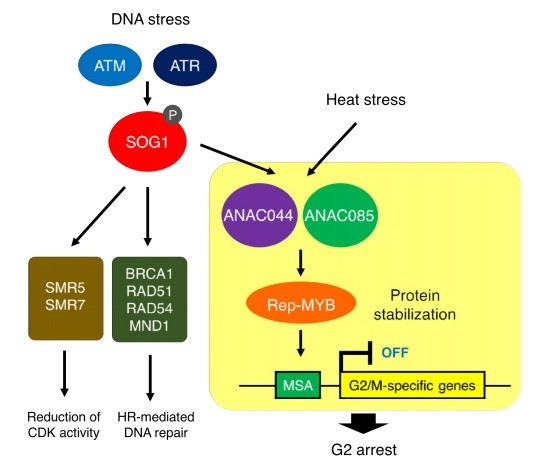
A regulatory module controlling stress-induced cell cycle arrest in Arabidopsis (bioRxiv)
Plant Science Research WeeklyProgression of the cell cycle central to growth, but during stress conditions plants arrest cell cycle progression to enable the organism to survive. SUPPRESSOR OF GAMMA RESPONSE 1 (SOG1), a plant-specific NAC-type transcription factor, regulates the expression of almost all genes induced by double-strand…
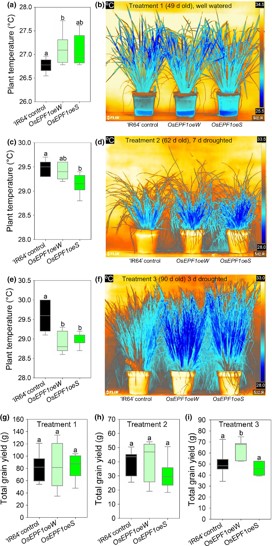
Rice with reduced stomatal density conserves water and has improved drought tolerance under future climate conditions (New Phytologist)
Plant Science Research WeeklyRice (Oryza sativa) is an important food source in many parts of the world. Unfortunately, this crop requires large amounts of water and it is not tolerant of drought or high temperatures. Here, Caine et al., have engineered the ‘IR64’ rice cultivar so that leaves will have lower stomatal density.…

